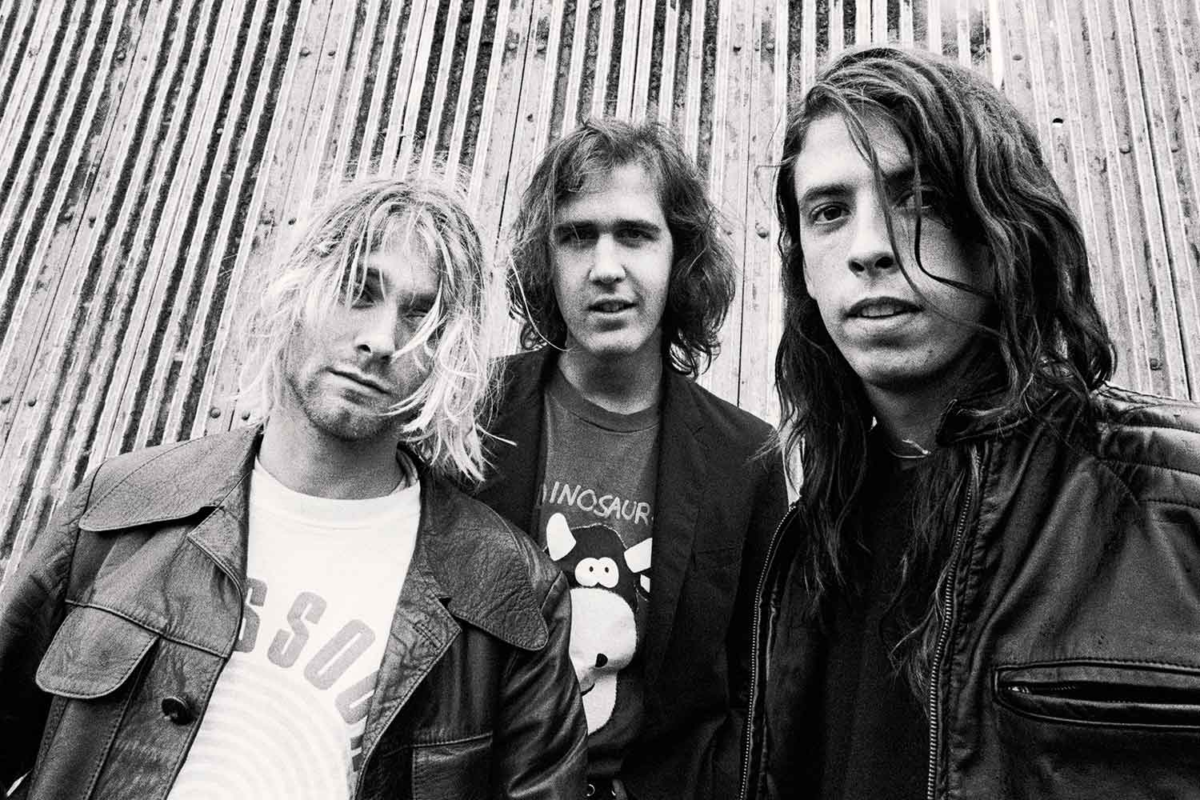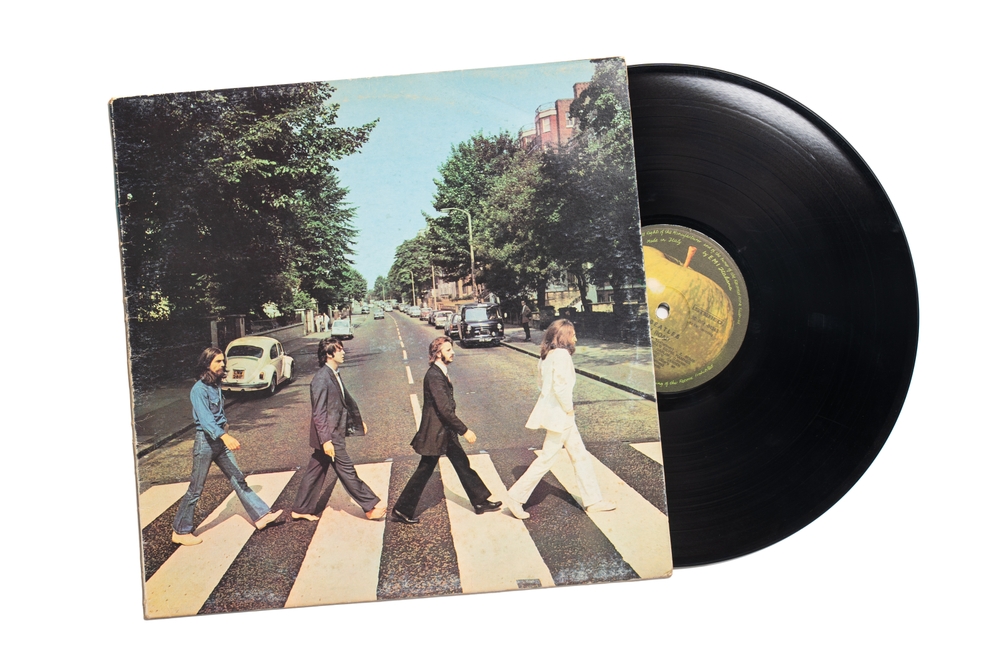Music
Nirvana Genre Of Music: What Genre Is Nirvana?

Nirvana genre of music is often classified as a grunge band, which is a subgenre of alternative rock that emerged in the late 1980s and gained mainstream popularity in the early 1990s. Grunge is known for its raw and distorted sound, often characterized by heavy guitar riffs, angst-filled lyrics, and a DIY (do-it-yourself) ethos. Nirvana, with Kurt Cobain as the lead singer and songwriter, was a key figure in the grunge movement.
Some of Nirvana’s most well-known songs include “Smells Like Teen Spirit,” “Come as You Are,” and “Lithium.” The band’s music often featured a combination of punk, hard rock, and alternative influences, and they played a significant role in shaping the alternative rock landscape of the early 1990s.
Nirvana, led by Kurt Cobain, was a key figure in the grunge movement and is often credited with bringing alternative rock and grunge music into the mainstream. Their music is characterized by loud, distorted guitars, dynamic shifts, and Cobain’s distinctive vocal style. While grunge is the primary label for Nirvana, their music also incorporates elements of punk rock, post-punk, and alternative influences.
Is Nirvana post punk or punk?
While punk rock is known for its raw and aggressive sound, characterized by short, fast songs with simple structures, Nirvana’s music often had a more melodic and dynamic quality. However, they retained the DIY (do-it-yourself) ethos of punk, and Kurt Cobain’s songwriting often reflected punk’s rebellious spirit.
Post-punk, on the other hand, is a genre that emerged in the late 1970s as a reaction to the simplicity of punk. Post-punk bands experimented with more complex song structures, atmospheric sounds, and a wider range of influences. Nirvana’s music doesn’t fit neatly into the post-punk category, but some elements of their sound and experimentation align with the broader alternative rock landscape that post-punk helped shape.
In essence, Nirvana’s music is often described as alternative rock or grunge, with influences from punk and post-punk, showcasing a mix of aggressive and melodic elements.
Why is Nirvana so famous?
- Impact of Grunge Movement: Nirvana emerged during the rise of the grunge movement in the late 1980s and early 1990s. Grunge, characterized by its raw sound and lyrics that often explored themes of disillusionment and angst, became a significant cultural and musical phenomenon. Nirvana, with its iconic frontman Kurt Cobain, was at the forefront of this movement.
- “Smells Like Teen Spirit”: The release of their single “Smells Like Teen Spirit” from the album “Nevermind” in 1991 marked a turning point in the music industry. The song’s success catapulted Nirvana to mainstream fame and is often credited with bringing alternative rock and grunge music to a broader audience.
- Album “Nevermind”: Nirvana’s second studio album, “Nevermind,” released in 1991, became a massive commercial success. It’s regarded as one of the greatest albums in the history of rock music. The album’s success helped Nirvana break into the mainstream and contributed to the popularity of the grunge genre.
- Cultural Impact: Nirvana’s music and ethos resonated with a generation that was seeking an alternative to the mainstream music of the time. The band’s authenticity, raw energy, and lyrics that touched on issues like alienation and disillusionment struck a chord with many listeners.
- Kurt Cobain’s Iconic Status: Kurt Cobain, the lead singer, and songwriter of Nirvana, became an iconic figure in popular culture. His distinctive voice, songwriting talent, and charismatic yet troubled persona contributed to the band’s allure. Cobain’s tragic death in 1994 further solidified his status as a cultural icon.
- Influence on Alternative Rock: Nirvana’s success had a profound impact on the direction of alternative rock. They paved the way for other alternative and grunge bands to gain mainstream recognition, influencing the sound and attitude of the 1990s rock music landscape.
In summary, Nirvana’s fame can be attributed to their pivotal role in the grunge movement, the success of their breakthrough album “Nevermind,” the cultural impact of their music, and the iconic status of Kurt Cobain. The band’s influence extends beyond their active years, and their legacy continues to shape the landscape of alternative and rock music.
What did Nirvana stand for?
Nirvana, particularly led by Kurt Cobain, embodied various principles and ideas, both in their music and their public persona. Some key aspects that Nirvana and Kurt Cobain stood for include:
- Authenticity: Nirvana was known for its authenticity and a DIY (do-it-yourself) ethos. The band maintained a raw and unpolished sound, and their success was, in part, attributed to their ability to connect with audiences on a genuine level.
- Anti-Commercialism: Cobain and Nirvana were often critical of the mainstream music industry and the commercialization of music. The success of their album “Nevermind” and the unexpected mainstream popularity of their single “Smells Like Teen Spirit” put them in a position of cultural prominence that they sometimes found uncomfortable.
- Alternative Culture: Nirvana was a central figure in the alternative rock and grunge movements. These movements represented a departure from the polished sound of 1980s glam metal and synth-pop, offering an alternative, more underground and authentic approach to music.
- Rebellion and Nonconformity: The band’s music often conveyed a sense of rebellion and nonconformity, themes that resonated with a generation disillusioned with mainstream culture. This was reflected in their lyrics, stage performances, and general attitude.
- Social Commentary: Nirvana’s lyrics frequently delved into social issues, personal struggles, and commentary on the state of society. Songs like “Smells Like Teen Spirit” and “Lithium” captured a sense of teenage angst and societal discontent.
- Individualism: Cobain, as the frontman, was known for his individualistic approach to music and fashion. His unique style, both in terms of music and personal presentation, contributed to his iconic status and resonated with those who valued individual expression.
- Ambiguity and Irony: Cobain’s lyrics often contained elements of ambiguity and irony. He was known for using cryptic and sometimes contradictory language, allowing listeners to interpret the songs in various ways.
It’s essential to note that while these aspects were prominent in Nirvana’s image and ethos, artists and their messages are complex, and interpretations may vary. Cobain himself struggled with the pressures of fame, and his tragic death in 1994 added a layer of complexity to Nirvana’s legacy. The band and Cobain continue to be remembered for their impact on music and culture, with fans finding different meanings and connections to their work.
Which band inspired Nirvana?
- Pixies: Cobain was particularly vocal about his admiration for the Pixies. He appreciated their dynamic shifts in volume, catchy melodies, and the way they combined soft and loud elements in their music. The Pixies’ influence is evident in Nirvana’s use of loud-quiet-loud dynamics.
- Sonic Youth: Nirvana admired Sonic Youth for their experimental and avant-garde approach to rock music. Sonic Youth’s use of alternative guitar tunings and dissonant sounds may have influenced Nirvana’s exploration of unconventional guitar techniques.
- The Melvins: The Melvins were a key influence on Nirvana, especially considering that Buzz Osborne, the lead singer and guitarist for The Melvins, was a friend of Kurt Cobain. The Melvins’ heavy and sludgy sound is reflected in some aspects of Nirvana’s music.
- Punk Bands: Nirvana had a strong connection to punk rock. Bands like Black Flag, the Germs, and the Sex Pistols were among the punk acts that influenced Cobain. The raw energy, DIY ethos, and rebellious spirit of punk had a significant impact on Nirvana’s sound and attitude.
- David Bowie: Cobain expressed admiration for David Bowie, and Bowie’s ability to reinvent himself and experiment with different musical styles may have influenced Cobain’s own willingness to push boundaries.
- Led Zeppelin: While Nirvana’s sound is more aligned with punk and alternative rock, Cobain had an appreciation for classic rock bands like Led Zeppelin. The influence might not be as direct, but elements of classic rock can be discerned in some of Nirvana’s compositions.
It’s important to note that while these bands and artists influenced Nirvana, the band’s sound was a unique blend of various styles. Cobain was known for his ability to synthesize diverse influences into a distinct sound that resonated with a broad audience.
Who discovered Nirvana?
Nirvana’s discovery and initial success are often attributed to a combination of factors, and it wasn’t a single person or entity that “discovered” them. However, some key individuals and events played a crucial role in the band’s rise to prominence:
- Sub Pop Records: Sub Pop Records, a Seattle-based independent record label, signed Nirvana in 1988. Sub Pop played a significant role in nurturing and promoting the emerging grunge scene, and Nirvana’s early releases, including the debut album “Bleach,” were on Sub Pop.
- Jonathan Poneman and Bruce Pavitt: Jonathan Poneman and Bruce Pavitt co-founded Sub Pop Records. They were early supporters of the Seattle music scene and played a pivotal role in signing and promoting bands like Nirvana, Soundgarden, and Mudhoney.
- John Peel: The influential British DJ John Peel played Nirvana’s music on his radio show, helping to expose the band to a wider audience outside of the United States. This exposure contributed to Nirvana’s growing popularity in the UK.
- “Nevermind” and Mainstream Success: Nirvana’s breakthrough to mainstream success came with the release of their second album, “Nevermind,” in 1991. The success of the single “Smells Like Teen Spirit” and the album’s popularity brought Nirvana to the attention of a global audience. The mainstream success of “Nevermind” is often seen as a pivotal moment in the band’s career.
While Sub Pop Records played a crucial role in Nirvana’s early years, it was the mainstream success of “Nevermind” and the widespread popularity of their music that propelled them to international fame. The collective efforts of individuals within the band, the Seattle music scene, and key figures in the music industry all contributed to Nirvana’s discovery and success.
Why is Nirvana so hyped?
- Musical Innovation: Nirvana’s music, especially during the early 1990s, was a departure from the prevailing styles in mainstream rock. The band’s combination of punk energy, alternative rock sensibilities, and catchy melodies presented a fresh and innovative sound. The influence of their music can still be heard in various genres today.
- Cultural Impact of Grunge: Nirvana was a leading figure in the grunge movement, a genre that had a significant impact on both music and culture in the early 1990s. Grunge was associated with a rebellious and authentic ethos, and Nirvana embodied these qualities, resonating with a generation that sought an alternative to the polished sound of 1980s hair metal and pop.
- Iconic Frontman – Kurt Cobain: Kurt Cobain, Nirvana’s lead singer and songwriter, became an iconic figure in popular culture. His charismatic yet troubled persona, along with his unique vocal style and songwriting, contributed to Nirvana’s appeal. Cobain’s struggles with fame, addiction, and mental health also added a layer of complexity to the band’s narrative.
- Breakthrough Album – “Nevermind”: The release of the album “Nevermind” in 1991, featuring hits like “Smells Like Teen Spirit,” marked a turning point in the music industry. The unexpected mainstream success of the album brought alternative rock and grunge to the forefront of popular music, and Nirvana became the face of this cultural shift.
- Impact on the Music Industry: Nirvana’s success challenged the existing music industry norms. The band’s rise demonstrated that alternative and independent music could achieve massive commercial success, paving the way for other non-mainstream genres and artists.
- Timeless Appeal: Nirvana’s music has proven to be enduring. The raw emotion in their songs, combined with catchy hooks and relatable lyrics, continues to resonate with new generations of listeners. The authenticity in their music and the themes they explored make their work relevant across time.
- Tragic End and Legacy: The tragic death of Kurt Cobain in 1994 added a layer of mystique and tragedy to Nirvana’s story. Cobain’s passing elevated him to an almost mythical status, and the band’s legacy became intertwined with the broader narrative of the 1990s music scene.
The combination of these factors contributes to the enduring “hype” around Nirvana. Their impact extends beyond the realm of music, influencing fashion, art, and the overall cultural landscape. The band’s ability to capture the zeitgeist of their time while maintaining a timeless quality has solidified their place in music history.
Pros and Cons
For a more general approach, here are some pros and cons of various aspects of life or decision-making:
Pros and Cons of Decision-Making:
Pros:
- Informed Choices: Weighing pros and cons allows for a more informed decision-making process.
- Clarity: It helps in clarifying the potential benefits and drawbacks of each option.
- Reduced Impulsivity: Encourages a thoughtful and deliberate approach, reducing impulsive decisions.
- Accountability: A structured decision-making process facilitates accountability for the chosen option.
Cons:
- Overthinking: Constantly analyzing pros and cons can lead to overthinking and indecision.
- Subjectivity: What one person considers a pro, another might see as a con, introducing subjectivity.
- Incomplete Information: Sometimes, all the relevant information might not be available, leading to incomplete analysis.
- Time-Consuming: The process can be time-consuming, which might not be suitable for time-sensitive decisions.
Pros and Cons of Technology:
Pros:
- Efficiency: Technology often enhances efficiency in various aspects of life.
- Communication: Facilitates instant communication and global connectivity.
- Innovation: Drives innovation and technological advancements.
- Access to Information: Provides easy access to vast amounts of information.
Cons:
- Dependency: Over-reliance on technology can lead to dependency issues.
- Privacy Concerns: Raises concerns about privacy and data security.
- Social Impact: Technology can contribute to social isolation and impact mental health.
- Environmental Impact: The production and disposal of technology can have negative environmental consequences.
Pros and Cons of Social Media:
Pros:
- Connectivity: Enhances social connectivity and allows people to stay in touch globally.
- Information Sharing: Facilitates the sharing of information and ideas.
- Business Opportunities: Provides a platform for business promotion and networking.
- Awareness: Social media can be a powerful tool for spreading awareness about social issues.
Cons:
- Misinformation: The spread of false information is a significant concern.
- Privacy Issues: Users often face privacy challenges and data breaches.
- Cyberbullying: Can contribute to cyberbullying and online harassment.
- Addiction: Excessive use can lead to social media addiction and negatively impact mental health.
If you have a specific area or decision-making process in mind, feel free to specify, and I can provide more tailored pros and cons.
Conclusion:
Response 1
In conclusion, considering the pros and cons is an essential aspect of making informed decisions in various aspects of life. It helps individuals weigh the potential benefits and drawbacks of different options, leading to more thoughtful and accountable choices. However, it’s important to strike a balance, as overthinking and subjectivity can hinder the decision-making process. Similarly, while technology and social media offer numerous advantages, they also come with challenges related to dependency, privacy, and social impact. Therefore, being mindful of the pros and cons and adapting them to specific contexts is crucial for effective decision-making and responsible use of technology and social media.
Response 2
It seems that you’re looking for a conclusion or summary based on the pros and cons discussed. Here’s a general conclusion:
In examining various aspects of decision-making, technology, and social media, it’s clear that there are both advantages and disadvantages to consider. The process of weighing pros and cons in decision-making fosters informed choices and accountability but can also lead to overthinking and subjectivity. Technology enhances efficiency, communication, and innovation but comes with concerns about dependency, privacy, and environmental impact. Social media fosters connectivity, information sharing, and business opportunities but raises issues of misinformation, privacy, cyberbullying, and addiction.
In conclusion, whether in decision-making or the adoption of technology and social media, a balanced and thoughtful approach is crucial. Recognizing the benefits while being aware of the drawbacks allows for a more nuanced understanding and better-informed choices in navigating the complexities of modern life.
FASHION
Sound and Style: The Endless Symphony of Music and Fashion

Sound and Style in the grand tapestry of history, music and fashion engage in an eternal dance, each influencing and shaping the other. From the revolutionary ’60s to the neon-infused ’80s, we embark on a journey to unravel the profound impact of iconic music moments on the ever-evolving canvas of fashion.
The Beatles’ British Invasion: A Mod Symphony
The mid-’60s witnessed the seismic arrival of the British Invasion, spearheaded by the cultural phenomenon known as The Beatles. Beyond their musical prowess, the quartet ignited a mod aesthetic that transcended sound and permeated the very fabric of fashion. The sharp suits and sophisticated dresses became emblematic, shaping an era that harmoniously embraced both melody and style.
The Beatles’ influence extended far beyond the music charts. Their tailored suits and polished appearances reflected the clean-cut image that defined the mod style of the ’60s. The world began to see that fashion could be as influential as the notes of a chart-topping song.
Woodstock and the Bohemian Revolution: Liberation in Fashion
Fast forward to the late ’60s, and Woodstock emerged as a liberating force of counterculture and free expression. This musical festival not only defined an era but also birthed a bohemian revolution in fashion. Fringed vests, flowing skirts, and tie-dye patterns became symbols of a new wave, embracing self-expression through clothing.
Woodstock was more than just a gathering of music enthusiasts; it was a statement of freedom and individuality. The fashion showcased at Woodstock became a visual representation of the counter-cultural movement, where unconventional, eclectic styles were celebrated.
Disco Fever: Saturday Night Fever’s Influence
The ’70s ushered in the disco era, epitomized by John Travolta’s electrifying moves in “Saturday Night Fever.” Beyond the dance floors, disco glamour profoundly impacted fashion. Glittering jumpsuits, sequins, and bold patterns became staples, reflecting the effervescent energy of disco music.
The disco era was a glamorous spectacle that influenced not only music but also the way people dressed. The glitzy and extravagant outfits worn at legendary places like Studio 54 became synonymous with the disco culture. Fashion became an integral part of the nightlife experience.
Michael Jackson’s Thriller: A Stylistic Revolution in the ’80s
The ’80s belonged to the King of Pop, Michael Jackson. His album “Thriller” not only shattered records but also set new standards in fashion. The iconic red leather jacket from the “Thriller” music video became a symbol of cool, highlighting the interplay between music and the evolution of sartorial boundaries.
Michael Jackson’s influence extended beyond music videos; it reached into the fashion world. The “Thriller” jacket, adorned with zippers and details, became an iconic piece that symbolized the bold and boundary-pushing style of the ’80s.
The Rise of Hip-Hop Fashion: A Streetwise Symphony
As hip-hop emerged in the ’80s and ’90s, it brought forth a distinctive street style that transcended music. Oversized clothing, bold logos, and athletic wear became synonymous with the hip-hop culture, influencing not only the music scene but also mainstream fashion.
Hip-hop’s influence on fashion was revolutionary. Artists like Run DMC popularized tracksuits, sneakers, and bold accessories. What started as a reflection of the urban lifestyle became a global fashion phenomenon, proving that style could be as diverse as the beats of hip-hop.
Fuller-Bust Lingerie: A Harmonious Inclusion
In this ongoing narrative, fuller-bust lingerie emerges as a symbol of inclusivity, embracing the diversity of body types. Similar to the harmonious relationship between music and fashion, lingerie designs have adapted to cater to varied needs and preferences.
In a world that celebrates self-expression, brands ensure that every woman can embrace her unique style with confidence, seamlessly integrating fashion and individuality.
Music
Harmony Unveiled: The Artistry of Acoustic Design in Music Studios

Harmony Unveiled embarking on a journey through the enchanting realm of music, “fruit cages” where melodies
weave tales and rhythms resonate with emotions, we find ourselves drawn to the
unsung hero of the auditory the intricate world of acoustic design within
recording studios. Music studios, as the architects of auditory landscapes, delicately
balance sound absorption and diffusion, creating an environment where each note
resonates with precision. Join us on this exploration of the symphony of studio
acoustics and uncover the nuanced contributions of the products below.
A Symphony in Silence: Decoding the Essence of Acoustic Design
In the heart of every evocative melody and rhythmic pulse lies a meticulously curated
space dedicated to capturing and enhancing the very essence of sound. Music
studios, the silent architects of our auditory experiences, rely on meticulous acoustic
design to achieve optimal sound quality. Achieving this delicate balance between
sound absorption and diffusion creates an environment where every note resonates
with precision, forming the backbone of a symphony that unfolds in the realms of
creativity.
Unveiling the Subtle Maestro: Netting in Acoustic Brilliance
In the pursuit of superior acoustics, netting emerges as a pivotal player, offering
innovative solutions across various industries. While renowned primarily for its
protective netting and fruit cages, the discreet role of netting companies in music
studio acoustics adds an intriguing layer to their expansive portfolio.
Celebrated for its durability and adaptability, netting plays a crucial role in
establishing controlled environments within studios. Serving as an inconspicuous
barrier, the netting facilitates sound absorption and diffusion, contributing to the
creation of an acoustically optimized space. This unassuming yet vital element
ensures the preservation of every musical nuance during the intricate recording
process, enriching the sonic landscape and elevating the artistry of sound.
Beyond Studios: The Ripple Effect of Netting in Live Music Experiences
Venturing beyond the confines of studio walls, the influence of netting extends to the
vibrant domain of live music performances. Outdoor events and festivals, known for
their unique challenges, benefit from netting solutions that create secure and
controlled spaces. As music enthusiasts gather to immerse themselves in live
performances, the unobtrusive netting adds to the immersive experience while
ensuring audience safety and comfort.
Sustainability in Studio Design: A Fusion of Tradition and Innovation
In an era where technology and tradition harmoniously coexist, the inconspicuous
presence of netting solutions epitomizes how innovation seamlessly integrates into
the fabric of creative spaces. Netting, with its commitment to quality and
sustainability, emerges as an unsung hero in the symphony of music studio
acoustics and outdoor live performances.
Nurturing the Future: Symbiosis of Technology and Tradition
As we delve into the captivating world of music, let's take a moment to acknowledge
the silent contributors shaping the way we experience sound. Whether enveloped
within the studio's embrace or beneath the expansive sky of a music festival,
unassuming netting becomes a testament to the pursuit of excellence in both music
and craftsmanship.
In concluding our exploration into the subtleties of studio acoustics and outdoor
music events, the unspoken synergy between technology, creativity, and reliable
solutions unfolds a harmonious future for the music industry.
Delving Deeper: The Melody of Netting Solutions
For those eager to gain a more profound understanding of how netting solutions
contribute to optimal acoustics in music studios, consider exploring netting. Dive into
the intricate details of innovative solutions that serve as the unsung heroes in
creating the perfect auditory environment. This exploration not only enriches our
understanding of acoustic design but also unveils the craftsmanship behind the
scenes that allows the art of sound to flourish.
Music
Hotels Near MGM Music Hall at Fenway: Making Your Stay Memorable

Hotels Near MGM Music Hall at Fenway are you thinking about taking a journey to see the live excitement of performances at the MGM Music Hall at Fenway? Your entire experience is greatly influenced by the lodging you select. We’ll go over the key factors in this guide to make sure you pick the ideal hotel to go with your visit to this legendary location.
- Introduction
- Brief Overview of MGM Music Hall at Fenway
Located in the center of Fenway, the MGM Music Hall is a cultural center that hosts a wide range of events to suit all preferences. The location guarantees guests a memorable time at all events, including concerts and unique performances.
-
Importance of Choosing the Right Hotel Near the Venue
Your level of convenience and enjoyment can be greatly impacted by how close your hotel is to MGM Music Hall.Hotels Near MGM Music Hall at Fenway Let’s examine the things to think about when you make this important choice.
-
Location Matters
-
Proximity to MGM Music Hall
Selecting a hotel that is close to the event by foot takes care of the transportation issues, letting you enjoy the event to the fullest without having to think about getting home.
-
Accessibility to Public Transportation
When using public transportation, choosing a hotel that is close to buses or trains gives you more freedom to explore the neighborhood.
III. Amenities to Look For
-
Comfortable Accommodations
It becomes imperative to return to a cozy room after an exciting night. Seek for lodgings that put a premium on leisure and comfort.
-
Parking Facilities
Secure hotel parking might help you save time and worry if you’re driving to the event, especially during busy event hours.
-
Budget-Friendly Options
-
Affordable Hotels in the Vicinity
Budget travel does not have to mean sacrificing quality. Find affordable solutions without compromising comfort.
-
Balancing Cost and Quality
Make sure the facilities are priced fairly and that the balance between them and your preferences and financial limits.
-
Reviews and Ratings
-
Importance of Checking Hotel Reviews
Analyze internet reviews to get a sense of previous visitors’ experiences and the general ambience of the hotel.
-
Utilizing Online Platforms for Feedback
Sites such as Yelp and TripAdvisor provide insightful reviews. Hotels Near MGM Music Hall at Fenway Make use of these tools to influence your judgments by drawing on actual consumer experiences.
-
Special Considerations
-
Pet-Friendly Accommodations
To guarantee a smooth stay if you’re traveling with a pet, look into hotels that allow pets.
-
Accessibility Features for Differently-Abled Guests
Give preference to lodgings that offer amenities for guests with varying abilities so that everyone may enjoy a welcoming environment.
VII. Local Attractions
-
Exploring Fenway Neighborhood
Continue your journey by taking in the beauty of the Fenway area and learning about the hidden cultural treasures and local attractions.
-
Other Nearby Points of Interest
Determine other nearby sites of interest to make your trip more complete after the event.
VIII. Booking Strategies
-
Early Booking Advantages
By making your reservation well in advance, you can guarantee availability, benefit from early booking savings, and secure the hotel of your choice.
-
Utilizing Discounts and Promotions
Investigate special deals and discounts to make the most of your savings without sacrificing the standard of your stay.
-
Weather Considerations
-
Impact of Seasons on Hotel Availability
There may be a spike in demand for lodging during some seasons. To guarantee your favorite hotel during busy seasons, make appropriate plans.
-
Preparing for Weather-Related Challenges
Plan appropriately and be aware of the weather, particularly if you are visiting during a season when there are certain problems.
-
Event Packages
-
Hotels Offering Special Packages for MGM Music Hall Events
Certain hotels offer special event packages that include lodging with extras like VIP admission or event transportation. Investigate these choices for a thorough understanding.
-
Benefits of Choosing Event-Specific Deals
Choose packages that are specifically designed for the MGM Music Hall events to get the most out of your visit overall.
-
Safety Measures
-
Ensuring the Hotel’s Safety Standards
Put your safety first by booking accommodations that follow safety procedures and have strong security measures.
-
Importance of a Secure Neighborhood
For a worry-free stay, take into account the neighborhood’s safety in addition to the hotel’s.
XII. Hidden Gems
-
Lesser-Known Hotels With Exceptional Services
Investigate alternatives that are off the main road and provide distinctive experiences and individualized care.
-
Exploring Unconventional Choices
For a unique experience, think about staying at unusual places like bed & breakfasts or boutique hotels.
XIII. Customer Service
-
Evaluating the Hotel’s Customer Service
Excellent customer service makes everything better. Give priority to lodgings with a reputation for having kind and accommodating personnel.
-
The Role of Friendly Staff in Enhancing the Experience
Personable personnel may enhance your visit and offer insightful local knowledge. Select lodgings that put the needs of their guests first.
XIV. Technology Integration
-
Wi-Fi and Other Tech Amenities
Stay connected in the modern day with hotels that provide dependable Wi-Fi and other technical conveniences.
-
Staying Connected While on the Go
Make sure you have smooth connectivity when traveling, whether for work or play.
-
Check-Out Tips
-
Streamlining the Check-Out Process
Become familiar with the hotel’s check-out procedure to streamline your departure and prevent last-minute snags.
-
Leaving Feedback for Future Guests
Make a positive impact on the travel community by providing insightful input that will help upcoming visitors make better decisions.
Conclusion
Selecting the ideal hotel for your visit to MGM Music Hall at Fenway is essential. You can make sure that the trip is stress-free and unforgettable by taking into account elements like location, facilities, and exclusive packages.
FAQs
-
Q: Are there hotels within walking distance of MGM Music Hall?
- A: Yes, several hotels offer convenient proximity to MGM Music Hall for an enhanced experience.
-
Q: How can I find budget-friendly accommodations near Fenway?
- A: Explore online travel platforms and booking websites for affordable options that meet your budget.
-
Q: Are there pet-friendly hotels in the area?
- A: Absolutely, many hotels in the vicinity welcome pets. Be sure to check their pet policies beforehand.
-
Q: What amenities should I prioritize when choosing a hotel?
- A: Consider factors like comfortable accommodations, parking facilities, and Wi-Fi to enhance your stay.
-
Q: How early should I book my hotel for an MGM Music Hall event?
- A: It’s advisable to book as early as possible to secure your preferred accommodation and take advantage of early booking benefits.




